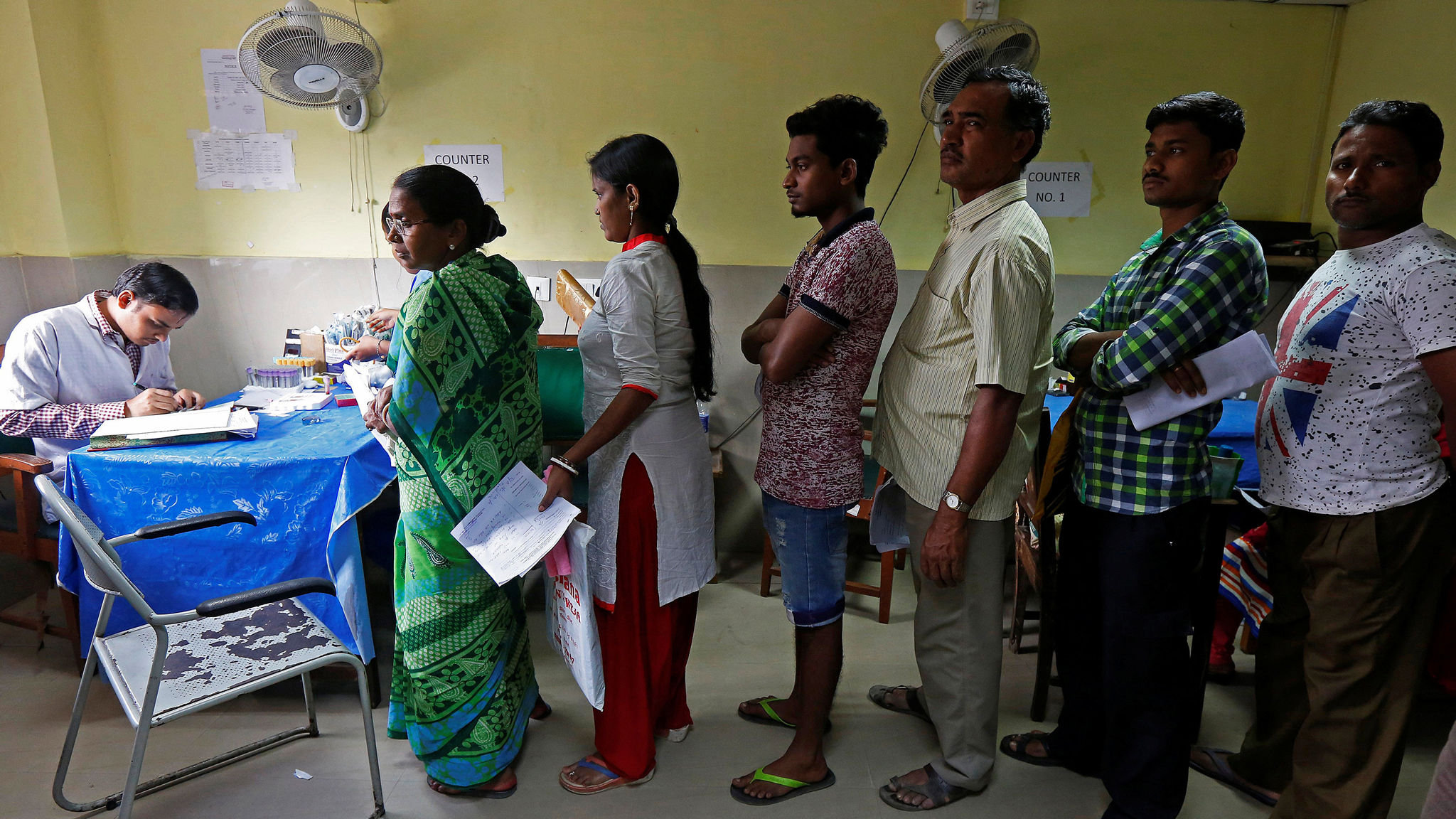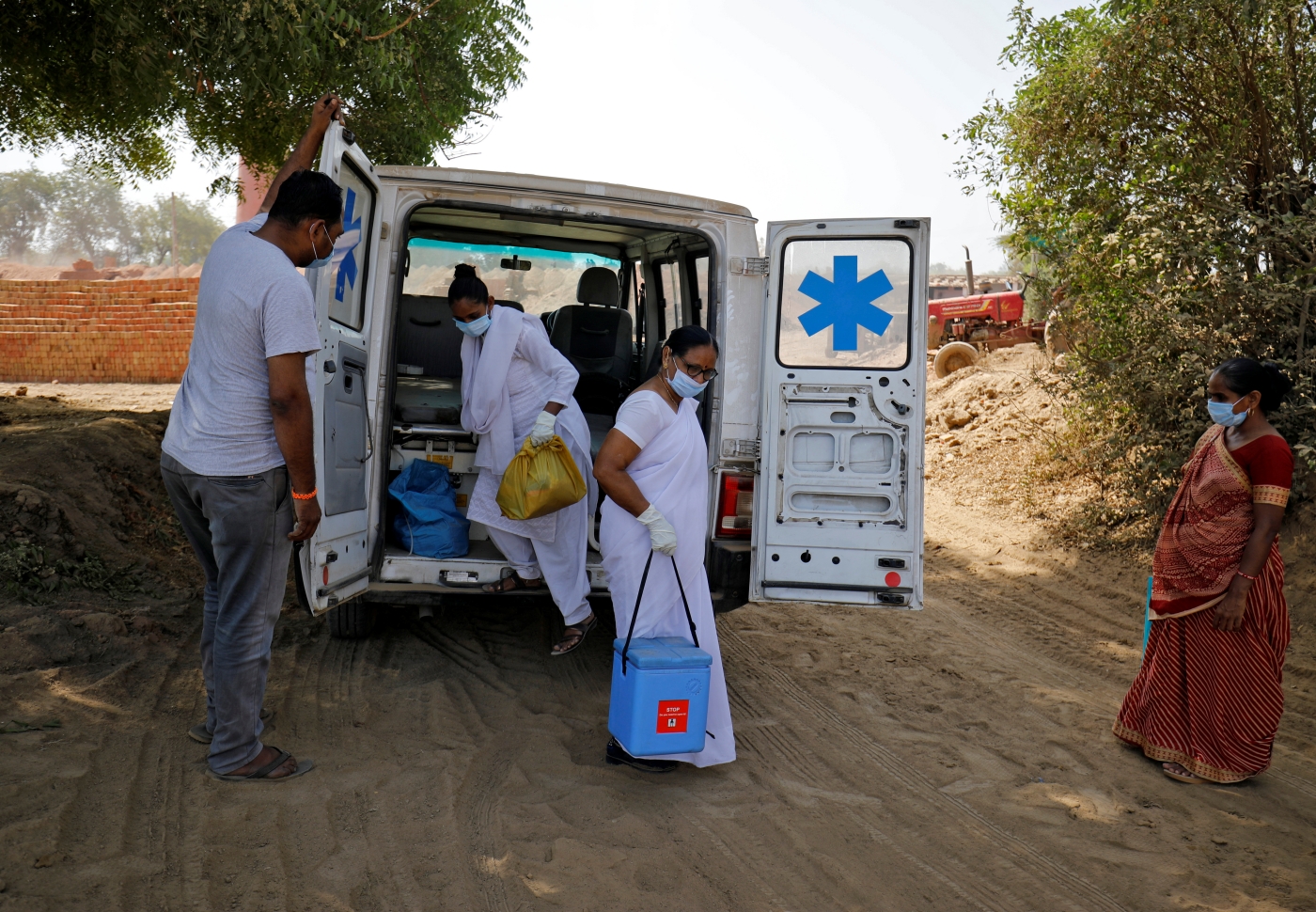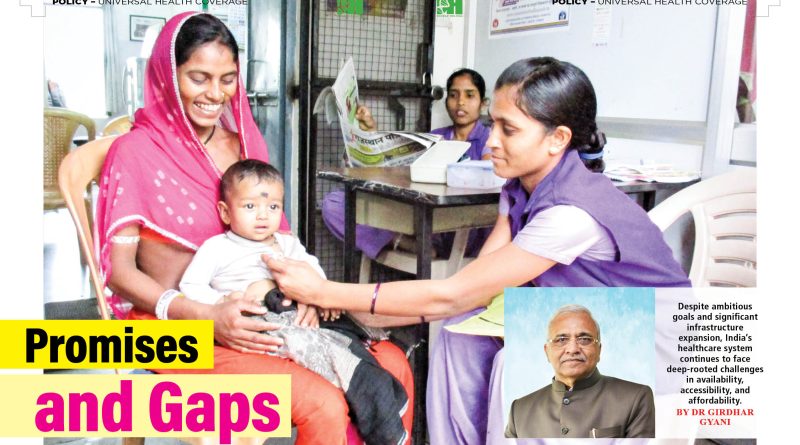Promises and Gaps
Despite ambitious goals and significant infrastructure expansion, India’s healthcare system continues to face deep-rooted challenges in availability, accessibility, and affordability.
By Dr Girdhar Gyani
The National Health Policy 2017, approved by the Union Cabinet in March 2017, explicitly aimed “to attain the highest possible level of health and well-being for all at all ages” through a preventive and promotive healthcare orientation in all developmental policies. The policy set a target year of 2022 for achieving Universal Health Coverage (UHC), which, as we know, amounts to making healthcare available, accessible and affordable, besides meeting quality and safety norms. It is time to introspect and review the progress made in this direction.
Availability of Healthcare Services: India’s healthcare infrastructure has expanded considerably, particularly through the National Health Mission (NHM) and its sub-missions—the National Rural Health Mission (NRHM) and the National Urban Health Mission (NUHM). As per recent data, India has over 1.6 lakh sub-centres, 30,000 Primary Health Centres (PHCs), and nearly 6,000 Community Health Centres (CHCs). However, the distribution is uneven, with many facilities understaffed and under-equipped, especially in rural and remote areas.

The private sector plays a dominant role in secondary and tertiary care, accounting for nearly 70 per cent of outpatient and 60 per cent of inpatient care. While this has improved availability in urban areas—mainly in Tier-I and Tier-II cities—there is hardly any presence of tertiary care hospitals in Tier-III towns. An AHPI study carried out in 2022 states that there are around 2 million beds: 1.1 million in the private sector and 0.9 million in the public sector. Further, it was found that nearly 85 per cent of tertiary/quaternary care beds are with the private sector. It also signifies that India has roughly 1.6 beds per 1,000 population, as against the norm of 3 beds per 1,000 population prescribed by WHO for developing countries. This raises serious concern about the availability of hospital beds and infrastructure. We therefore need to fast-track efforts to increase the number of beds by one-and-a-half times. The government may consider increasing capacity at district hospitals as well as CHCs, and opening new hospitals at sub-district levels where appropriate. Simultaneously, the government needs to aggressively incentivise the private sector to open 100-bedded tertiary care hospitals in Tier-III towns. This was emphasised even by Prime Minister Narendra Modi while launching Ayushman Bharat in September 2018 at Vigyan Bhawan.
Accessibility Challenges: Accessibility appears to be an even more serious issue. It is affected by geographic, financial, and social barriers. Rural populations, comprising about 65 per cent of India’s total population, often have to travel long distances to access basic care in general and specialised care in particular. Transportation problems, poor referral linkages, and low health awareness compound these issues. An AHPI study conducted in 2022 reveals stark disparities: Karnataka has 4.2 beds per 1,000 population, while Bihar has only 0.3. Even within relatively better-performing states, there is significant inter-district disparity. We therefore need to assess the availability of healthcare infrastructure (hospital beds, doctors, nurses) in each state and district, and initiate action to achieve at least 3 beds per 1,000 population at the district level. Only then can healthcare truly become accessible.

Affordability of Healthcare: With vast improvements in diagnostic and medical technology, average life expectancy has increased from 35 years in 1947 to over 70 years in 2024. This, however, has also increased the cost of healthcare delivery, largely due to the expense of diagnostic equipment and specialised hospital infrastructure for procedures like cancer treatment and organ transplants. Most people are still not inclined to opt for health insurance and face catastrophic expenses in the event of serious illness.
Government schemes like Ayushman Bharat – Pradhan Mantri Jan Arogya Yojana (AB-PMJAY), which aims to provide health coverage to over 50 crore people, have come as a big relief to those below the poverty line. The inclusion of those aged 70+ has further strengthened the scheme. It envisages cashless medical treatment through government and empanelled private hospitals. However, since the majority of tertiary care beds/services lie with the private sector, the scheme’s success depends on private hospital participation. Unfortunately, most tertiary/quaternary care hospitals have shown little interest—mainly for two reasons: first, the reimbursement rates fixed by the government are not based on any scientific study and are significantly below operating costs; second, there are inordinate delays—often months—in making payments to hospitals.
Earlier, about 70 per cent of the population paid in cash, and only 30 per cent were covered by government schemes. In such a scenario, hospitals could manage low reimbursement rates through cross-subsidies. But now, the situation is reversed: around 70 per cent of the population is covered by government schemes (CGHS, ECHS, ESI, Ayushman Bharat, etc.), and it is financially unsustainable for hospitals to serve such a large proportion of patients at unviable rates. As a result, patients are forced to pay out of pocket, which becomes catastrophic for the underprivileged.
Way Forward
India’s healthcare landscape is evolving, with expanding infrastructure and coverage. However, achieving equitable access and availability requires sustained investments in public health, workforce development, incentivising the private sector, and inclusive policy implementation. Based on the above, the following are key actions needed to make healthcare available, accessible, and affordable:
Availability: We need to aim for 3 beds per 1,000 population, up from the current 1.6. While the government can build new hospitals or expand existing ones, with current healthcare investment at just 1.5 per cent of GDP, its capacity is limited. Instead, aggressive incentives to the private sector—such as tax holidays, soft loans, free or subsidised land, cheaper electricity, and single-window clearances for greenfield projects in Tier-III towns—could accelerate progress.
Accessibility: As highlighted earlier, disparities in infrastructure from state to state and district to district are significant. Rural and Tier-III areas are especially underserved in tertiary care. AHPI has mapped bed availability at the state level; this needs to be extended to the district level. Based on this data, incentives must be offered to the private sector to establish tertiary care hospitals in deficit regions.
Affordability: While India appears to be moving toward universal UHC on paper, the ground reality differs. For tertiary care, the government must rely on the private sector. This model of public-private partnership can work if reimbursement rates are revised scientifically. CGHS rates, for instance, have not been updated since 2014. As an interim measure, these rates could be revised by adjusting for 10 years of inflation. The same applies to the Ayushman Bharat scheme. Timely payments to hospitals would also help—especially for mid-sized hospitals. This can be achieved if the government reinstates the original clause that imposed 1 per cent interest on payments delayed beyond 30 days. Such a measure would make officials accountable and help hospitals manage cash flow. Additionally, since a large share of healthcare delivery costs stems from imported diagnostic equipment, the government should consider reducing import duties until indigenisation is achieved. Import of high-end refurbished equipment not manufactured in India should also be permitted. This would help small and mid-sized hospitals offer affordable services.
(The author is Director General, Association of Healthcare Providers, India)

